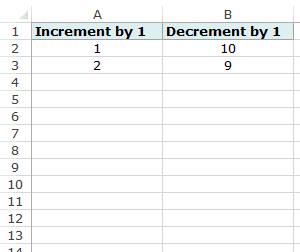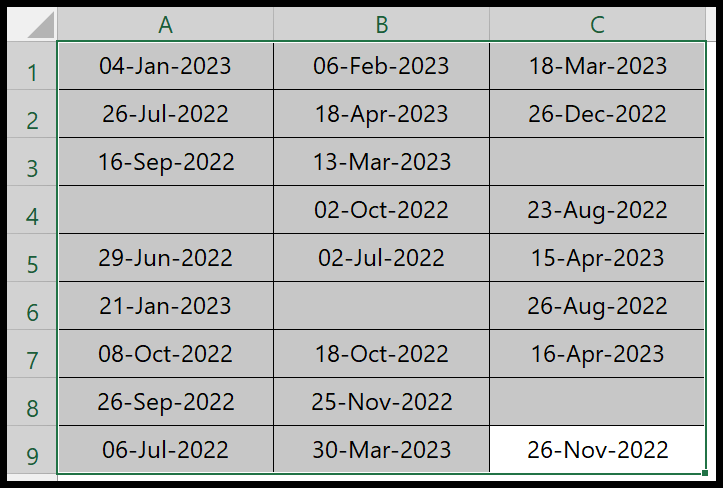Sales enablement software has become an indispensable tool for businesses looking to streamline their sales process and boost efficiency. By integrating marketing materials, customer interactions, and data analytics, these platforms offer a cohesive ecosystem that empowers sales teams to close deals more effectively. As companies increasingly recognize the value of sales enablement tools, the market is witnessing a surge in innovative software solutions tailored to meet diverse business needs.
Selecting the right sales enablement software can be a game-changer. Businesses seek applications that can provide a comprehensive view of the customer journey, facilitate seamless communication, and automate routine tasks to free up sales representatives to focus on what they do best—sell. With options ranging from customizable CRM systems to advanced analytics and training platforms, the best sales enablement tools of the year stand out for their ability to increase the average value of sales and enhance overall productivity.
In a landscape where the choice of software can directly impact a company’s bottom line, it is crucial to make an informed decision. Reviews and comparisons by reputable sources such as G2 and TechRadar offer valuable insights, while firsthand experiences shared on platforms like TrustRadius highlight user satisfaction and real-world applicability. Whether a business is scaling up or refining its sales strategy, investing in the top-performing sales enablement software can lead to significant improvements in sales outcomes and customer management.
Understanding Sales Enablement Software
Sales enablement software is a game-changer for sales teams. It’s the tech that makes sure your team has what they need to sell effectively. In simple terms, it’s like the utility belt for sales pros, stocked with all the gadgets to help them succeed.
Some key components include:
-
Content Management: These platforms help organize and manage sales materials, making sure reps have easy access to the latest pitch decks, case studies, and more.
-
Analytics: They offer insights into how sales content performs, allowing teams to tweak their strategies for better results.
-
Integration: The best sales enablement platforms play nice with CRMs and marketing tools, creating a seamless flow between different stages of the sales process.
Here’s a breakdown of what you’ll typically find inside:
| Feature | Functionality |
|---|---|
| Content Accessibility | Easy retrieval of sales materials |
| Tracking | Monitoring content usage |
| Training | Educating sales teams |
| Customization | Personalizing sales approaches |
These platforms often come with added perks like training modules to keep sales teams at the top of their game, and customization options for a more personal touch during outreach.
When scouting for the best sales enablement software, consider options like:
- ClickUp: Noted for robust analytics and integration capabilities.
- Outreach: Renowned for its seamless ecosystem with other tools.
- Showpad: Celebrated for intuitive content management and analysis.
- Highspot: Distinguished by formidable sales content management features.
They don’t just store stuff; they make sure every interaction with a prospect is backed by the right resources. It’s not about showering prospects with content, but about offering the right content at the right time.
Essential Features of Sales Enablement Tools
Choosing the right sales enablement software is critical for optimizing sales processes and ensuring teams have the resources they need at their fingertips.
Content Management and Access
Sales enablement tools must offer robust content management systems. They should allow sales reps to easily store, organize, and retrieve all types of sales materials. Access is also crucial; reps need to find and share content with prospects quickly, whether it’s personalized videos, slide decks, or curated content catalogs.
Integration Capabilities
Integration with existing CRM systems and other sales tools is a non-negotiable feature. These tools should seamlessly connect to various platforms, automating data entry and enabling a unified view of customer interactions.
Analytics and Reporting
Analytics and reporting capabilities are at the heart of sales enablement software, providing sales teams with insights into content usage and engagement patterns. Users should be able to track metrics and KPIs to gauge the effectiveness of their sales strategy and materials.
Training and Onboarding
An effective sales enablement platform should facilitate training and onboarding. Through built-in coaching tools, teams can ramp up new hires and provide ongoing training to seasoned reps, ensuring everyone is up-to-date with the latest sales techniques.
Collaboration and Communication
Sales is a team sport, and collaboration tools are key. Sales enablement software should encourage communication between team members, as well as facilitate the sharing of best practices and content feedback.
Customization and Personalization
Finally, customization and personalization options allow sales teams to tailor the experience to their needs. Whether it’s creating digital sales rooms or automating content delivery, personalization helps in making meaningful connections with customers.
Top Sales Enablement Platforms
The sales enablement landscape is rapidly evolving with platforms designed to enhance content management, training, and analytics—each with unique features catering to various aspects of the sales process.
Highspot
Highspot stands out with its robust content management capabilities. Users can leverage tailored content, and its analytics offer insights into what truly engages buyers. It simplifies the training process and enhances the effectiveness of sales teams.
Gong
Gong focuses on improving sales conversations through AI-powered analysis. It transforms communication into data, giving sales teams actionable feedback to refine their approach. Gong’s technology captures sales interactions across multiple channels for in-depth training and strategy development.
Seismic
Seismic is an all-encompassing platform that assists sales teams in personalizing customer interactions. Its analytics help in optimally aligning sales and marketing efforts. They offer an intelligent solution for managing sales materials, ensuring content is always relevant and up-to-date.
HubSpot
HubSpot Sales Hub provides a full suite of tools that integrate seamlessly with its CRM. The platform ensures that sales strategies are data-driven and closely aligned with inbound marketing efforts, streamlining the entire sales process.
Allego
Allego offers a versatile sales enablement platform with features geared toward mobile learning. The platform emphasizes ease of use, allowing for content creation, coaching, and collaborative tracking progress, all customizable to the user’s needs. Its customer service is well-regarded, serving as a reliable support system for sales teams.
Improving Sales Team Productivity
To elevate performance, sales teams need tools that streamline workflows, enhance communication, and manage projects effectively.
Workflow Automation
Workflow automation software is key to increasing efficiency within sales teams. By automating repetitive tasks, reps can focus more on selling and less on administration. For example, SalesRabbit excels in territory management and lead tracking, allowing for a more organized approach to the sales process.
Sales Engagement and Communication
Effective sales engagement and robust communication tools are pivotal for productivity. They ensure that sales reps have easy access to relevant information and can share it with prospects promptly. High-ranking platforms like Showpad focus on content management and training, with advanced search functionality to quickly find the right sales materials.
Project Management and Tracking
Lastly, project management and tracking tools are vital for keeping sales teams on target. These tools provide a centralized platform for tracking sales performance, setting deadlines, and organizing collaborative efforts. Notable tools like ClickUp integrate project management functionalities, optimizing the ability of teams to hit their sales goals.
The Sales Cycle and Customer Journey
Managing leads effectively and overseeing customer interactions throughout the sales process are crucial for success. Optimizing the sales cycle and understanding the customer journey are key to boosting conversion rates and fostering long-term relationships.
Lead Management and Scoring
Prospective customers start their journey as leads, which need to be managed and scored to determine their potential value. Effective lead management software tracks interactions and gathers data to score leads, prioritizing them for sales efforts. Salesforce Sales Cloud excels in this area, offering a robust system for managing leads and utilizing predictive scoring to elevate the most promising prospects.
Sales Pipeline Management
Pipeline management tools help sales teams visualize and control the stages of the sales cycle. These tools make it easier to identify where in the sales funnel individual leads are and what actions are needed to move them closer to conversion. Many sales enablement software solutions, like the ones mentioned for 2024, provide insights on channel performance and deal tracking features that are imperative for efficient pipeline management.
Customer Relationship Management (CRM)
A strong CRM system is the backbone of successful sales enablement, with effective platforms like Microsoft Dynamics 365 enhancing customer loyalty by mapping the customer journey. These systems capture every interaction with customers, building profiles that can be used to tailor future communications and strategies. They ensure that the relationship doesn’t end at the sale but continues to grow, leading to repeat business and referrals.
Evaluating and Adopting Sales Enablement Solutions
When selecting sales enablement software, businesses focus on three critical areas: affordability, user adoption rates, and the access to help and educational resources.
Cost and Pricing Considerations
Deciding on the right software often starts with the budget. Companies must examine both initial costs and ongoing expenses, such as subscription fees that may start as low as $25.00 for entry-level options. It’s essential they consider not only the purchase price but also any long-term costs associated with upgrades or additional features that may be necessary as the business grows.
Speed and Ease of Adoption
An intuitive interface speeds up the adoption process, enabling sales teams to leverage the software’s full capabilities with minimal downtime. Ease of use comes from user-friendly design and features like advanced search functionality, which saves sales reps time when they’re looking for pertinent content to share with prospects.
Support and Training Options
A solid support system, including customer support and training modules, is vital for a smooth onboarding experience. Companies benefit from providers that offer a range of training options—ranging from built-in coaching tools to digital sales rooms that facilitate immersive learning. Good software includes resources designed to optimize the user’s ability to implement the tool effectively within their sales cycle.
Sales Enablement Best Practices
In the realm of sales, leveraging the right practices can make a world of difference. This section digs into the nitty-gritty of setting up a robust sales enablement strategy, measuring the sales performance for continuous improvement, and fostering a culture of learning and development.
Creating a Sales Enablement Strategy
A rock-solid sales enablement strategy starts with pinpointing what works. Top-notch sales enablement software helps in identifying high-performing sales actions and scaling them across the team. The goal is to standardize best practices and make those insights actionable. Here’s how a structured strategy can help:
- Identify and codify top-performing actions: Learn from the best sales reps and encapsulate their methods into the broader sales process.
- Choose the right software: Seek out sales enablement platforms that offer comprehensive features — from content delivery to coaching modules.
Measuring Sales Performance
To ensure a sales strategy turns into tangible results, measuring performance is vital. Here’s a brief on keeping a pulse on sales performance:
- Data-driven approach: Use CRM data to track and analyze sales metrics.
- Continual assessments: Regularly evaluate sales reps through both quantitative KPIs and qualitative feedback to gauge progress.
Continuous Learning and Development
Sales success hinges on the ongoing development of a company’s salesforce. Continuous learning equipped with actionable coaching can significantly boost competency:
- Leverage learning platforms: Integrate platforms that offer a variety of training and development tools, accessible to sales reps at their convenience.
- Build a feedback loop: Implement a culture where feedback informs targeted coaching modules to address specific areas of improvement.
Frequently Asked Questions
This section covers some of the most common inquiries about sales enablement tools, focusing on their utility for startups, distinguishing features among platforms, and implementation best practices.
What are the top sales enablement tools for startups?
For startups, sales enablement tools such as Enablix and Highspot can be highly beneficial. Enablix caters to content enablement, while Highspot excels as a sales content management tool that helps teams find the right content for different stages of the sales cycle.
How do examples of sales enablement platforms differ?
Platforms like Gong.io and Chorus.ai specialize in sales coaching and training, offering insights on sales calls to improve team performance. On the other hand, Yesware is a solution focused on enhancing sales emails, aiming to streamline communication with prospects and customers.
What features should I look for in sales enablement software?
Key features to look for include advanced content management, analytics, training modules, and robust search functionality. A platform like Showpad, for example, is often praised for these features, making it easier for sales reps to share relevant content with prospects.
Are there any high-quality free sales enablement tools available?
While many sales enablement tools are premium, some platforms may offer free versions or trials that can be quite effective for smaller teams or startups to begin enhancing their sales processes.
What are some best practices for implementing sales enablement in a company?
Companies should focus on aligning marketing and sales teams, ensuring consistent messaging across content, and investing in training for platform adoption. Bloomfire is recommended for remote teams, facilitating collaboration and information sharing.
Can you compare different sales enablement companies and their offerings?
Comparing different companies involves looking at user reviews, functionality, customer support, and integration capabilities. Platforms like Enablix and Highspot have distinct focuses but both aim to improve sales productivity and content accuracy throughout different stages of the sales cycle.


